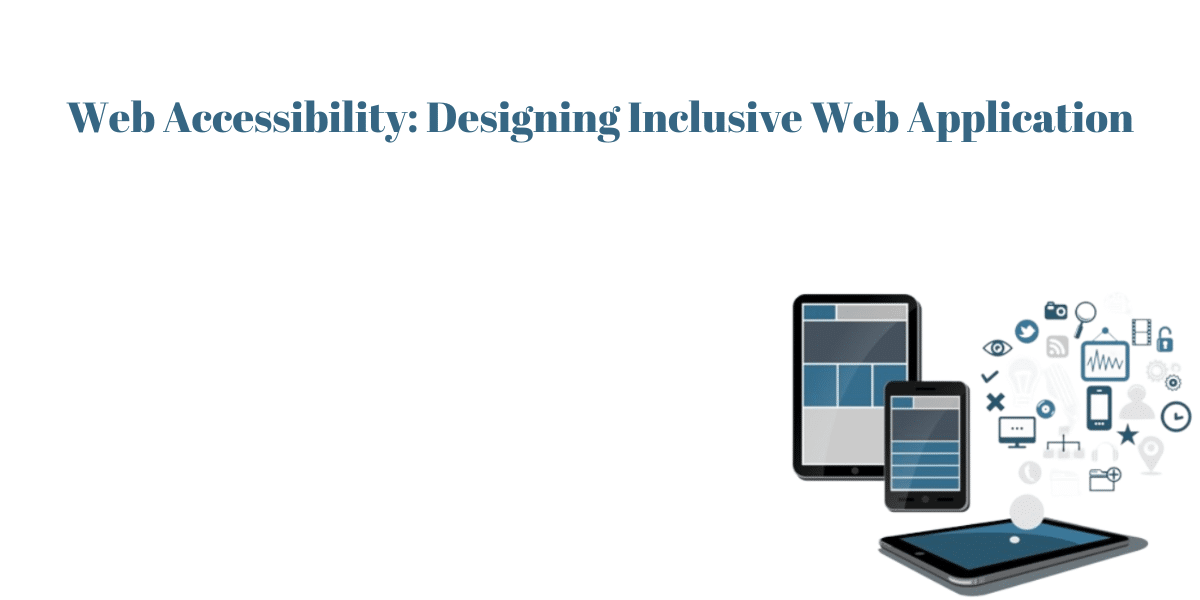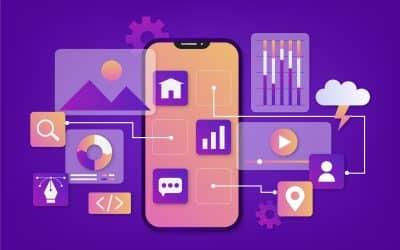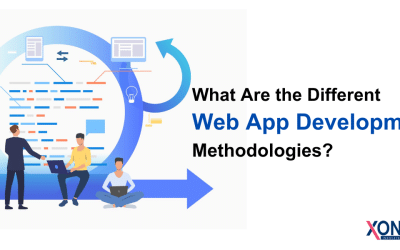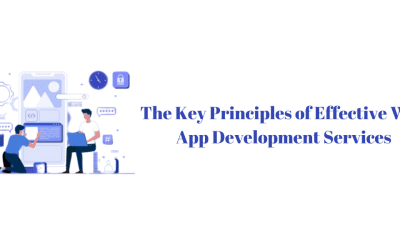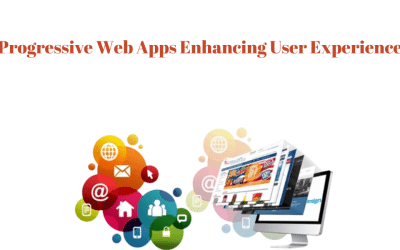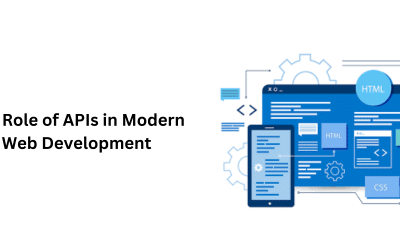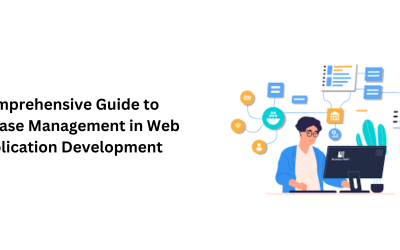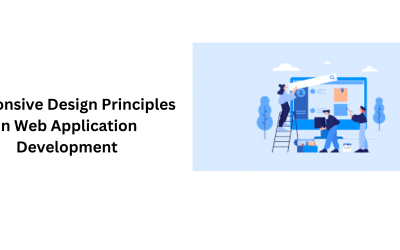In the rapidly evolving landscape of digital technology, the significance of web accessibility has become more pronounced than ever. As the internet serves as an integral part of daily life, it is imperative to ensure that websites and applications are designed with inclusivity in mind.
This comprehensive guide explores the fundamental principles of accessible web design, emphasizing compliance with the Web Content Accessibility Guidelines (WCAG). From keyboard navigation and multimedia considerations to addressing diverse user needs, each subsection unveils essential insights and practical strategies.
By understanding the importance of web accessibility, designers and web app developers can embark on a journey towards creating digital spaces that not only comply with standards but also prioritize equal access and usability for all individuals, regardless of their physical or cognitive abilities.
The Importance of Inclusive Web Design
Inclusive web design stands as an imperative pillar in the digital landscape, shaping the user experience for individuals with diverse abilities and ensuring equal access to information and services. Recognizing the importance of inclusivity transcends mere compliance with guidelines; it reflects a commitment to fostering a digital environment that accommodates users across the spectrum of abilities and disabilities.
Accessible web design not only caters to those with visual or auditory impairments but also extends its impact to individuals with cognitive, motor, and sensory challenges. The crux lies in creating a universally accessible platform where everyone, regardless of their capabilities, can navigate, comprehend, and engage seamlessly. Embracing inclusive design principles enhances the overall usability of websites and applications, cultivating a user-centric approach that benefits a broad audience.
As the digital landscape continues to expand and technology becomes increasingly intertwined with daily life, the ethical and practical implications of inclusive web design become ever more apparent. By prioritizing accessibility, designers and developers contribute to a more equitable online space, breaking down barriers and ensuring that the benefits of the digital age are accessible to all. In essence, inclusive web design is not just a guideline to follow but a philosophy to adopt, reflecting a commitment to democratizing access to information and services on the internet.
Navigating the WCAG Guidelines for Accessibility
Navigating the Web Content Accessibility Guidelines (WCAG) is an essential journey for web app designers and developers committed to fostering digital spaces that cater to diverse user needs. These guidelines, established by the World Wide Web Consortium (W3C), serve as a compass, providing a comprehensive framework for creating accessible web content. Comprising four overarching principles – Perceivable, Operable, Understandable, and Robust (POUR) – the WCAG guidelines articulate specific success criteria under each principle to ensure a holistic approach to accessibility. Addressing sensory, cognitive, and motor impairments, these criteria act as a roadmap, guiding the implementation of inclusive design features.
From providing alternative text for images to facilitating keyboard navigation and ensuring compatibility with assistive technologies, each guideline contributes to a digital environment that transcends barriers. Navigating the WCAG guidelines involves not just compliance but a deep understanding of user experiences across diverse abilities, emphasizing the importance of empathy in design.
By adhering to these guidelines, designers and developers embark on a mission to make the web universally accessible, contributing to a digital landscape where information and services are available to everyone, regardless of their physical or cognitive abilities. In essence, navigating the WCAG guidelines becomes a commitment to creating an inclusive digital ecosystem that reflects the ethos of equality, empowerment, and user-centricity.
Creating Accessible Content for Diverse Audiences
Creating accessible content for diverse audiences is a fundamental aspect of designing a digital landscape that is inclusive and equitable. In a world where online information and services have become integral to daily life, acknowledging and addressing the diverse needs of users is paramount. Accessibility goes beyond mere compliance; it is a commitment to ensuring that content is perceivable, operable, understandable, and robust for individuals of varying abilities.
This involves adopting practices such as providing alternative text for images, captions for multimedia content, and readable fonts with proper contrast. Designers must consider the needs of users with visual, auditory, cognitive, and motor impairments, as well as those with varying levels of technological proficiency. Moreover, embracing semantic HTML and structuring content in a logical manner enhances the experience for assistive technologies, making information more accessible to everyone.
The key is to approach content creation with empathy, understanding that users navigate the digital landscape in diverse ways. By prioritizing accessibility in content creation, designers contribute to breaking down barriers and fostering an environment where information is universally available. In essence, creating accessible content is not just a technical consideration; it is a human-centric approach that reflects a commitment to inclusivity and ensures that the digital realm remains accessible to all, regardless of individual differences.
Implementing Keyboard Navigation for All Users
Implementing keyboard navigation is a critical facet of web app design aimed at ensuring an inclusive and accessible user experience for all individuals. While many users navigate digital interfaces effortlessly with a mouse or touch input, those with motor disabilities or certain impairments may rely on keyboards or other assistive technologies.
Designers and developers must prioritize the creation of interfaces that allow seamless navigation using keyboard controls alone. This involves structuring the website or application with a logical and intuitive focus order, ensuring that users can efficiently navigate through interactive elements, links, and forms using keyboard inputs. Adequate visual cues and feedback mechanisms must be incorporated to guide users as they move through different sections of the interface. Testing across various browsers and devices becomes essential to guarantee consistency in keyboard navigation experiences.
By embracing and implementing robust keyboard navigation practices, web designers contribute significantly to the broader goal of web accessibility, creating digital spaces that are usable by individuals with diverse needs and preferences. This approach not only aligns with the principles of inclusivity but also promotes a user-centric design ethos where the digital landscape is navigable and enjoyable for everyone, regardless of their physical abilities or interaction preferences. In essence, prioritizing keyboard navigation is a commitment to breaking down barriers, fostering equality in digital interactions, and ensuring a truly accessible online environment for all users.
The Role of ARIA in Enhancing Web Accessibility
The Accessible Rich Internet Applications (ARIA) stands as a pivotal technology in enhancing web app development accessibility by addressing the challenges posed by dynamic and interactive content. ARIA, an extension of HTML, provides a set of attributes that can be added to web elements to convey additional information to assistive technologies, making complex web applications more navigable and understandable for users with disabilities.
Its role becomes particularly significant in situations where traditional HTML falls short in conveying the semantic structure or behavior of dynamic content such as single-page applications. ARIA attributes, like roles, states, and properties, aid in describing elements like navigation menus, form controls, and live regions, enabling screen readers and other assistive technologies to interpret and communicate the content effectively to users. However, while ARIA is a powerful tool, its proper implementation requires careful consideration.
Designers and web app developers must ensure that ARIA roles align with the actual behavior of the elements, maintaining synchronization between the visual interface and the information conveyed to assistive technologies. Thorough testing across different platforms and assistive technology combinations is crucial to guarantee a seamless user experience. In essence, the role of ARIA in enhancing web accessibility is rooted in its ability to bridge the gap between dynamic, interactive content and the needs of users with disabilities, fostering a digital environment that is truly inclusive and empowers all individuals to engage with online content regardless of their abilities or disabilities.
Designing Visually Impaired-Friendly Interfaces
Designing visually impaired-friendly interfaces is a nuanced and crucial aspect of web development that seeks to ensure an inclusive digital experience for individuals with visual disabilities.
The key objective is to create interfaces that go beyond mere visual aesthetics, catering to a diverse user base that may rely on screen readers, magnifiers, or alternative input methods. A fundamental principle involves providing clear and descriptive text alternatives for images through well-crafted and concise alt text, enabling screen reader users to comprehend the content seamlessly. Consistent and logical heading structures aid in navigating the page hierarchy, facilitating a more organized experience for those who rely on screen readers or Braille displays.
Contrast is a critical consideration, as sufficient color contrast between text and background enhances readability for users with low vision. The incorporation of resizable text options and adaptable layouts accommodates users who need to adjust the interface according to their visual preferences. Moreover, ensuring keyboard accessibility and focus indicators assists individuals with visual impairments in navigating through interactive elements. Regular testing with screen readers and usability evaluations with visually impaired users play a pivotal role in refining and validating the effectiveness of these design choices.
In essence, designing visually impaired-friendly interfaces involves a holistic approach that considers both the technical aspects of accessibility and the user experience, fostering a digital environment where individuals with visual impairments can engage with content, services, and applications with autonomy and efficiency.
Prioritizing Color Contrast for Improved Readability
Prioritizing color contrast in design is a fundamental element for enhancing readability and ensuring an inclusive digital experience for all users. This consideration is particularly crucial for individuals with visual impairments or those who may experience difficulties in discerning certain color combinations.
Adequate color contrast between text and background elements is essential to guarantee that content is easily legible and comprehensible. Adhering to guidelines such as those outlined in the Web Content Accessibility Guidelines (WCAG) ensures that the chosen color combinations meet minimum contrast ratios, promoting readability for users with varying levels of visual acuity. Effective color contrast not only benefits individuals with visual impairments but also enhances the overall user experience for everyone, especially when navigating content in varying lighting conditions or on different devices.
Designers must also account for users with color vision deficiencies, opting for color combinations that remain distinguishable for individuals with common types of color blindness. Regular testing using color contrast analysis tools helps in identifying and rectifying potential issues during the design phase.
In prioritizing color contrast, designers contribute to creating a digital environment that is accessible, user-friendly, and considerate of diverse needs, reinforcing the principle that good design is not just about aesthetics but also about inclusivity and usability for a broad range of individuals. Ultimately, it is an essential step towards fostering a more universally accessible and readable online space.
Ensuring Multimedia Accessibility for All Users
Ensuring multimedia accessibility is a critical endeavor in web app development services, aiming to create a digital landscape where all users, regardless of abilities or disabilities, can engage with and comprehend multimedia content seamlessly. The diverse ways individuals consume information, coupled with varied impairments, necessitate a thoughtful approach.
Providing alternative text for images and graphics becomes paramount, offering descriptive and contextually rich descriptions for users relying on screen readers or those with visual impairments. For videos, subtitles or captions are essential, enabling individuals with hearing impairments to access the audio content. Transcripts further enhance accessibility, offering an alternative means of consuming content for users with various needs. Additionally, incorporating audio descriptions in videos ensures a comprehensive experience for individuals who are blind or visually impaired. Implementing accessible multimedia players with controls that are operable via keyboard or assistive technologies is crucial for users with motor disabilities.
Regular testing across a spectrum of devices and assistive technologies is imperative to validate the effectiveness of these accessibility features. By prioritizing multimedia accessibility, designers contribute to an inclusive online environment where information is not only presented in diverse formats but is also accessible to a broad audience, reinforcing the principle that digital content should be perceivable and operable by all users, regardless of their individual abilities or limitations. In essence, ensuring multimedia accessibility is a pivotal step towards fostering an equitable digital space where content is not just presented but is comprehensible and enjoyable for users with diverse needs.
Building Responsive and Accessible Forms
Building responsive and accessible forms is a crucial aspect of web app designing, ensuring that the interactive elements of a website are inclusive and user-friendly for individuals with diverse abilities. Forms serve as gateways for user engagement, and their design plays a pivotal role in creating an accessible digital experience.
Responsive design is fundamental, as it enables forms to adapt seamlessly to various screen sizes and devices, accommodating users who may access the content through different platforms. Prioritizing accessibility in form design involves providing clear and concise labels, ensuring logical tab order for keyboard navigation, and offering descriptive error messages for users with visual or cognitive impairments. Input fields should be designed to accommodate assistive technologies, allowing users with motor disabilities to interact with ease. Incorporating proper HTML markup, such as using the appropriate input types and attributes, contributes to a more accessible form structure. Implementing ARIA roles and attributes can further enhance the experience for users relying on screen readers.
Regular usability testing with individuals of diverse abilities is essential to identify and address potential barriers in form interactions. By focusing on both responsiveness and accessibility in form design, web developers contribute to a digital environment where all users, regardless of their physical or cognitive capabilities, can interact with online forms effectively and independently. Ultimately, building responsive and accessible forms is a commitment to fostering an inclusive online experience, ensuring that interactive elements are designed with empathy and consideration for the diverse needs of the user base.
Strategies for Designing Inclusive Navigation Menus
Designing inclusive navigation menus is a multifaceted task that requires a thoughtful approach to cater to the diverse needs and preferences of users. The navigation menu is a crucial component of a website, acting as a guide for users to access different sections and content.
To ensure inclusivity, designers must prioritize simplicity and clarity in menu structure, avoiding overly complex or convoluted layouts that may pose challenges for individuals with cognitive or learning disabilities. Providing meaningful labels for navigation links and avoiding ambiguous language enhances comprehension for users of all abilities, including those who rely on screen readers. Implementing keyboard accessibility ensures that users with motor disabilities can navigate through the menu effortlessly, emphasizing the importance of focus styles and logical tab order.
Consideration of color contrast is vital, ensuring that menu items remain distinguishable for users with visual impairments or color vision deficiencies. For touch-based devices, designers must account for touch target size to facilitate ease of interaction for users with dexterity challenges. Employing ARIA landmarks or roles can enhance the navigational experience for users relying on screen readers, aiding in quick navigation to key sections of the website. Regular usability testing with diverse user groups, including individuals with disabilities, helps identify and address potential navigation challenges.
By adopting these strategies, web app designers contribute to the creation of inclusive navigation menus that foster a user-friendly and accessible digital environment, where everyone can navigate seamlessly and independently, regardless of their abilities or disabilities.
Making Images Speak: Alt Text Best Practices
Crafting effective alt text, or alternative text, for images is a critical aspect of web design, ensuring that content remains accessible to individuals with visual impairments who rely on screen readers. Alt text serves as a textual description of an image, conveying its essential information and context. To maximize its effectiveness, alt text should be concise, descriptive, and purposeful, capturing the core message or function of the image. It’s essential to convey the content’s meaning without being overly verbose, providing enough information for users to understand the context while maintaining brevity.
Avoiding generic phrases like “image of” or “picture of” and instead focusing on the specific content and its significance enhances the user experience. For decorative images, which do not convey meaningful content, using empty alt attributes or implementing null or empty alt text helps screen readers skip unnecessary information.
Incorporating keywords relevant to the image content aids in search engine optimization while ensuring that users receive accurate and informative descriptions. Regular testing with screen readers and feedback from users with visual impairments play a crucial role in refining alt text, ensuring its efficacy in diverse contexts.
By adhering to alt text best practices, designers contribute to a more inclusive digital landscape where individuals with visual impairments can engage with online content seamlessly, emphasizing the principle that accessibility is an integral aspect of creating content that is perceivable and operable for all users.
Understanding and Implementing Semantic HTML
Understanding and implementing Semantic HTML is a cornerstone of web development, emphasizing the use of markup language that conveys meaning beyond visual presentation. Semantic HTML employs tags that carry inherent meaning, such as <header>, <nav>, <article>, and <footer>, providing a clear structural hierarchy to assistive technologies and developers alike.
This approach enhances accessibility by ensuring that content is well-organized and meaningful, catering to users with disabilities who rely on screen readers or other assistive devices. Proper semantic structure not only aids in navigation but also contributes to improved search engine optimization, as search engines rely on the HTML structure to understand and rank content. Semantic HTML fosters a separation of concerns between content and presentation, promoting cleaner code and facilitating future maintenance and updates. Implementing semantic elements facilitates a more inclusive and user-friendly experience, as screen readers interpret the structure and convey it to users, enabling them to navigate and comprehend the content effectively.
Developers should prioritize semantic elements over non-semantic alternatives, promoting clarity and interoperability across different platforms and devices. Regular validation and testing with various assistive technologies help ensure the proper interpretation of semantic HTML, affirming its effectiveness in creating a digital environment where information is not only presented aesthetically but is also accessible and intelligible to a diverse user base.
Ultimately, understanding and implementing semantic HTML underscores a commitment to creating web content that is not just visually appealing but also inherently meaningful and inclusive.
Enhancing User Experience with Accessible Fonts and Typography
Enhancing user experience through accessible fonts and typography is a pivotal aspect of web design, influencing not only the visual appeal but also the readability and inclusivity of digital content. The choice of fonts plays a crucial role in creating a positive user experience, particularly for individuals with visual impairments or reading difficulties. Prioritizing legibility by selecting fonts with clear letterforms and appropriate spacing contributes to improved readability, benefiting users with varying levels of visual acuity.
Implementing accessible typography involves choosing font sizes and line spacing that accommodate diverse reading preferences and ensure comfortable viewing across different devices. Contrast between text and background is a critical consideration, as it enhances visibility and aids users with low vision. Employing a responsive web app design approach allows fonts to adapt seamlessly to various screen sizes, ensuring a consistent and accessible reading experience.
Additionally, providing users with the option to adjust font sizes or switch to high-contrast modes empowers them to customize the interface according to their individual needs. Regular testing, including assessments with users of different abilities, helps validate the effectiveness of chosen fonts and typographic styles in diverse contexts.
By prioritizing accessible fonts and typography, designers contribute to a digital environment where content is not only aesthetically pleasing but also ensures a positive and inclusive user experience, embodying the principle that good design goes beyond visuals to accommodate the diverse needs and preferences of all users.
The Impact of Web Accessibility on SEO
The impact of web accessibility on Search Engine Optimization (SEO) is profound, with accessibility practices playing a crucial role in determining a website’s search engine ranking. Search engines, like Google, prioritize user experience, and accessibility directly aligns with this objective. By adhering to accessibility standards, such as those outlined in the Web Content Accessibility Guidelines (WCAG), websites enhance their usability for a broader audience, including individuals with disabilities. Search engines consider factors like page load speed, mobile-friendliness, and content structure, all of which are influenced by accessibility measures.
Alt text for images, descriptive headings, and well-organized content not only cater to users with disabilities but also contribute to search engines’ understanding of the page’s content, positively impacting SEO. Additionally, accessible websites are more likely to have lower bounce rates and higher engagement, factors that search engines use to evaluate the relevance and quality of content.
As search algorithms evolve to prioritize user satisfaction, integrating accessibility practices becomes a strategic SEO advantage. In essence, web accessibility is not only an ethical imperative for creating an inclusive digital environment but also a pragmatic approach for businesses and website owners looking to improve their online visibility and rank higher in search engine results, emphasizing the interconnected nature of user experience, accessibility, and SEO in the evolving landscape of digital presence.
Testing Tools and Techniques for Accessibility Compliance
Testing tools and techniques for accessibility compliance are integral components of the web development process, ensuring that digital content is inclusive and adheres to accessibility standards. Automated testing tools, such as WAVE (Web Accessibility Evaluation Tool) and Axe, analyze web pages for common accessibility issues, providing developers with insights into potential problems related to HTML markup, contrast ratios, and interactive elements.
These tools offer a quick overview of compliance but may not capture all nuances of user experience. Manual testing, involving human evaluators with diverse abilities, is essential to identify context-specific issues that automated tools may overlook. Screen readers and browser extensions, like ChromeVox and NVDA, simulate the experience of users with visual impairments, helping developers assess the effectiveness of their content and interactive elements. Keyboard-only navigation testing ensures operability for users who rely on keyboard input or alternative devices. Incorporating user testing with individuals with disabilities provides valuable real-world insights, allowing developers to address issues specific to diverse user needs.
A combination of automated and manual testing, coupled with assistive technology evaluations, creates a comprehensive approach to accessibility testing. Regular and iterative testing throughout the development lifecycle is crucial, ensuring continuous improvement and compliance with evolving accessibility standards such as the Web Content Accessibility Guidelines (WCAG). By employing a diverse range of testing tools and techniques, developers can confidently create digital experiences that prioritize accessibility, fostering an inclusive online environment for users of all abilities.
Web Accessibility and Mobile Application Design
The intersection of web app development accessibility and mobile application design is a critical consideration in the contemporary digital landscape, given the ubiquity of mobile devices. Designing accessible mobile applications involves addressing the unique challenges posed by various screen sizes, input methods, and device capabilities.
Mobile accessibility encompasses aspects such as responsive design, ensuring that applications adapt seamlessly to different screen sizes and orientations, catering to users with varying devices and preferences. The touch-centric nature of mobile interfaces demands careful consideration of touch targets, prioritizing sizes and spacing to accommodate users with motor disabilities. Voice recognition and speech-to-text features enhance accessibility for users with mobility impairments. Mobile applications must adhere to the principles outlined in the Web Content Accessibility Guidelines (WCAG), optimizing navigation, ensuring clear and concise content, and providing alternatives for non-text elements.
Testing on a variety of mobile devices and assistive technologies is paramount to validate the application’s accessibility across diverse contexts. Integrating accessibility into the initial stages of mobile app development fosters a user-centric approach, contributing to an inclusive digital experience for individuals with disabilities. As the reliance on mobile devices continues to grow, the synergy between web accessibility and mobile application design becomes increasingly vital, emphasizing the need for designers and developers to prioritize accessibility considerations in this dynamic and evolving digital landscape.
Addressing Cognitive Disabilities in Web Design
Addressing cognitive disabilities in web design is a nuanced endeavor that necessitates a thoughtful and inclusive approach to cater to users with diverse cognitive abilities. Designers must consider factors such as simplicity, clarity, and consistency in the layout and presentation of information to accommodate individuals with cognitive impairments.
Using straightforward language, providing clear navigation cues, and minimizing distractions contribute to a more user-friendly experience. Well-organized content, chunked into digestible segments, aids users with attention or memory issues. Offering customizable features, such as font sizes, color schemes, and the option to disable animations, empowers users to tailor the interface to their specific cognitive needs. Providing contextual help, tooltips, and concise instructions aids in task completion for users with cognitive challenges. Implementing predictable navigation paths and minimizing changes in the interface help individuals with cognitive disabilities maintain a sense of orientation and reduce cognitive load.
Testing with users who have cognitive disabilities, incorporating their feedback, and iterating on design choices are crucial steps in refining the accessibility of a website. By embracing these principles and integrating cognitive accessibility considerations into the design process, designers contribute to creating a digital environment that is not only visually appealing but also cognitively accessible, promoting a more inclusive and equitable online experience for individuals with diverse cognitive abilities.
Designing Accessible Tables for Data Presentation
Designing accessible tables for data presentation is a fundamental aspect of web design, ensuring that information is conveyed in a clear and inclusive manner for users of diverse abilities. For users relying on screen readers or other assistive technologies, tables need to be structured with semantic HTML elements, such as <th> for headers and <td> for data cells, facilitating a comprehensible and organized reading order.
Meaningful and concise captions or summaries should be provided to convey the table’s purpose and context. Incorporating proper headers and scope attributes enhances the interpretability of the table’s structure, particularly for users with visual impairments. Ensuring sufficient color contrast and utilizing a consistent and logical layout contribute to the overall accessibility of the table. For large datasets, implementing pagination or providing options for customizable views allows users to navigate efficiently. Responsive design is crucial to ensure tables adapt to different screen sizes and orientations, catering to users on various devices.
Regular testing with screen readers and assistive technologies helps identify and address potential accessibility issues, ensuring a seamless experience for all users. By prioritizing accessible table design, web developers contribute to a digital environment where complex data can be presented and understood by individuals with diverse abilities, reinforcing the principle that information accessibility is a cornerstone of inclusive web design.
Improving Website Accessibility for Users with Motor Disabilities
Improving web app development accessibility for users with motor disabilities is a critical undertaking that involves thoughtful design considerations to ensure equal access and usability. Individuals with motor disabilities may face challenges in precise mouse control or keyboard interactions, necessitating design modifications.
Ensuring keyboard accessibility is fundamental, allowing users to navigate through the website using tab and arrow keys. Designers should focus on providing sufficient clickable areas, known as touch targets, to accommodate users who may have difficulty with fine motor control. Implementing skip navigation links allows users to bypass repetitive content and navigate directly to essential sections, enhancing efficiency.
A consistent and logical layout aids user in predicting the location of interactive elements, reducing the cognitive load for those with motor challenges. Incorporating features such as autocomplete, autofill, and predictive text can streamline input processes, benefiting users with limited dexterity.
Ensuring that time-sensitive actions can be extended or disabled provides users with adequate time to complete tasks. Regular usability testing with individuals having motor disabilities is crucial to identify and address potential barriers in the design. By prioritizing accessibility features that cater to users with motor disabilities, web developers contribute to a digital environment that fosters independence and inclusivity, recognizing that a user-friendly web experience should be accessible to everyone, regardless of their physical abilities or challenges.
Ensuring Compatibility with Screen Readers
Ensuring compatibility with screen readers is a pivotal aspect of web design, crucial for fostering an inclusive online experience for individuals with visual impairments. Screen readers, assistive technologies that convert digital text into synthesized speech or Braille output, rely on a website’s underlying structure and content to effectively communicate information to users. Web developers must prioritize semantic HTML, utilizing elements like headings, lists, and landmarks appropriately to convey a clear and meaningful structure.
Descriptive and succinct alt text for images ensures that users receive informative content descriptions, enhancing their understanding of visual elements. ARIA (Accessible Rich Internet Applications) attributes play a crucial role in providing additional information about the interactions and dynamic content, allowing screen readers to interpret complex user interfaces accurately. Developers should test their websites with popular screen readers like JAWS, NVDA, or VoiceOver to identify and address compatibility issues.
Prioritizing keyboard navigation is essential, enabling users to navigate through interactive elements without reliance on a mouse. Regular accessibility audits and user testing sessions with individuals using screen readers provide valuable insights, allowing designers to refine and improve the compatibility of their websites. By embracing these practices, web developers contribute to an online environment where individuals with visual impairments can access and engage with digital content independently, reinforcing the principle that a truly inclusive web experience is one that accommodates diverse user needs, including those relying on screen readers.
The Intersection of Web Accessibility and User Experience
The intersection of web accessibility and user experience (UX) is a critical convergence point in the digital landscape, emphasizing the inseparable connection between creating an inclusive design and delivering a positive user experience for all individuals. Web accessibility focuses on ensuring that websites and applications are usable by people with disabilities, covering aspects such as visual, auditory, cognitive, and motor impairments.
On the other hand, user experience involves crafting interfaces that are intuitive, efficient, and enjoyable for all users. When these two principles intersect, designers create digital environments that are not only compliant with accessibility standards like WCAG but also prioritize the diverse needs and preferences of users. Ensuring compatibility with assistive technologies, providing alternative text for images, implementing keyboard navigation, and optimizing content readability are all elements that bridge the gap between accessibility and a seamless user experience. Inclusive design principles, such as designing for adaptability and flexibility, enhance the overall usability of websites for everyone, regardless of their abilities or disabilities.
The intersection of web accessibility and user experience is where empathy, functionality, and aesthetics converge, reinforcing the idea that an accessible and user-friendly digital experience should be a universal goal. By considering the diverse ways users interact with digital content and embracing the principles of accessibility, designers contribute to a digital landscape that is not only compliant but also genuinely inclusive, fostering a positive and equitable experience for all.
Integrating Accessibility into the Design Process
Integrating accessibility into the design process is a pivotal approach that underscores the commitment to creating digital experiences that are inclusive from the outset. Rather than treating accessibility as an add-on or post-development consideration, designers and developers should embed it as a core principle at every stage of the design lifecycle. Early planning involves incorporating accessibility requirements into project goals and timelines, ensuring that stakeholders recognize its significance.
During the conceptualization phase, designers should prioritize inclusive design thinking, considering the diverse range of users and their unique needs. Collaborating with individuals with disabilities, conducting usability testing, and gathering feedback play crucial roles in refining design choices. As the design progresses, adhering to semantic HTML, providing alternative text for images, and optimizing navigation for keyboard users become integral components. Prototyping and wireframing should encompass considerations for various assistive technologies, validating the design’s compatibility across diverse platforms and devices.
Ongoing testing and iterative improvements throughout development ensure that accessibility remains a continuous focus. Incorporating accessibility training for design teams fosters a culture of awareness and expertise. By weaving accessibility into the fabric of the design process, web application designers contribute to a digital landscape where accessibility is not merely a checkbox but a foundational aspect, reflecting a commitment to inclusivity, equal access, and a positive user experience for individuals of all abilities.
Creating Inclusive Experiences for Users with Learning Disabilities
Creating inclusive experiences for users with learning disabilities is a multifaceted endeavor that demands a holistic and empathetic approach to digital design. Individuals with learning disabilities may face challenges in processing, retaining, and understanding information. Designers should prioritize simplicity and clarity in content presentation, employing plain language and avoiding jargon to enhance comprehension.
Visual elements, such as images and icons, should be used judiciously and accompanied by descriptive text. Providing consistent navigation and minimizing distractions within the interface aids users in maintaining focus. Offering multimedia content with clear captions or transcripts ensures that information is accessible through multiple modalities. Utilizing a structured layout with well-organized content and logical hierarchies’ aids in cognitive processing. Customization features, such as adjustable font sizes and background contrasts, empower users to tailor the interface to their preferences. Implementing interactive elements with clear instructions and feedback enhances user engagement.
Regular user testing, feedback sessions, and collaboration with advocacy groups for individuals with learning disabilities are essential components of the design process. By incorporating these principles, designers contribute to creating a digital environment where users with learning disabilities can navigate and interact with content independently, fostering a sense of inclusivity and empowerment. Ultimately, designing for users with learning disabilities not only aligns with ethical considerations but also enriches the overall user experience, embodying the principle that digital accessibility is an integral facet of creating a more equitable and user-friendly online world.
Evolving Standards and Future Trends in Web Accessibility Design
Web accessibility design is evolving to address emerging challenges and align with advancing technologies. As of now, the Web Content Accessibility Guidelines (WCAG) remains a foundational standard, offering principles and criteria for creating accessible digital content. However, the landscape is dynamic, and future trends indicate a shift towards more comprehensive and context-aware approaches. Personalization and adaptability are gaining prominence, acknowledging that user needs vary significantly.
Designers are exploring ways to provide customizable interfaces, allowing users to tailor their digital experience based on preferences and accessibility requirements. Artificial intelligence (AI) and machine learning are being leveraged to enhance accessibility, with the potential to automate certain aspects of content optimization and adapt interfaces dynamically. Voice interfaces and conversational design are becoming integral components of web accessibility, providing alternative interaction modes for users with motor or cognitive impairments. The growing prevalence of immersive technologies, such as virtual and augmented reality, presents both challenges and opportunities for accessibility, prompting the exploration of inclusive design principles within these environments.
Collaboration between the tech industry, accessibility advocates, and regulatory bodies is likely to shape evolving standards, ensuring that web accessibility remains responsive to technological advancements. As the digital landscape continues to evolve, future trends will likely focus on creating more personalized, adaptable, and innovative solutions to make the web truly accessible for individuals of all abilities, emphasizing the ever-growing importance of inclusive design in shaping the future of digital interactions.
The Key Takeaway
In conclusion, the evolution of web accessibility design stands at the forefront of creating a digital landscape that prioritizes inclusivity and equal access for users of diverse abilities. As we navigate the dynamic intersection of user experience and accessibility, the foundational principles encapsulated in standards like WCAG continue to guide designers towards creating interfaces that are not only compliant but genuinely user-friendly.
Looking forward, the trends shaping web accessibility, from personalization and adaptability to the integration of AI development and immersive technologies, reflect a commitment to innovation and a recognition of the varied needs of the user base. It is imperative that designers, developers, and stakeholders remain vigilant in embracing these trends, fostering a collaborative approach that ensures the web is an inclusive space for everyone, regardless of their abilities, thus embodying the true spirit of digital accessibility.

